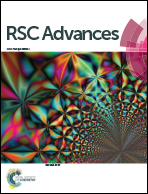Recent studies of the synthesis, functionalization, optoelectronic properties and applications of dibenzophospholes
Abstract
The first dibenzophospholes were described in the 1950s, but only recently have they gained greater importance, due to their use in organic electronics and the possibility of designing new π-conjugated, optoelectronic materials that incorporate these heterocycles. Our comprehensive review covering a period of 15 years (2001–2016), includes methods of synthesis of these compounds, methods for their functionalization, a description of their optoelectronic properties and their first use in optoelectronic devices. The review represents the current state of knowledge in this field and shows the great potential of simple and functionalized dibenzophospholes. The work described in this review suggests that dibenzophospholes should also be investigated more intensively as single materials, as well as in structural combinations with other π-extended conjugated aromatic and heteroaromatic systems containing phosphorus, nitrogen, silicon or sulfur atoms.

- This article is part of the themed collection: 2017 Review articles


 Please wait while we load your content...
Please wait while we load your content...